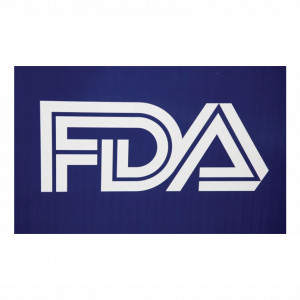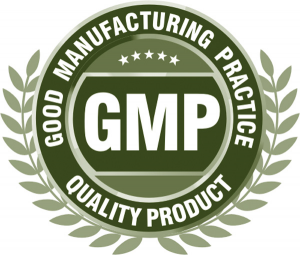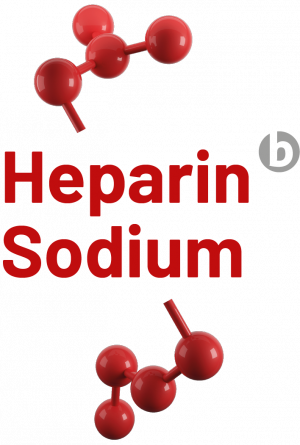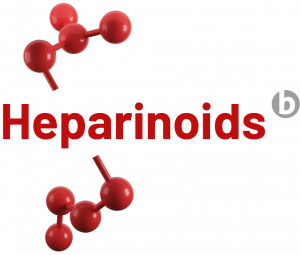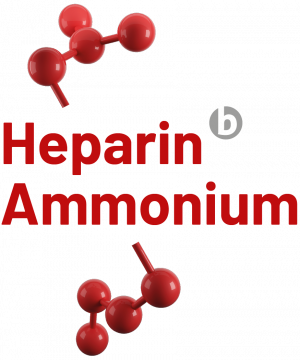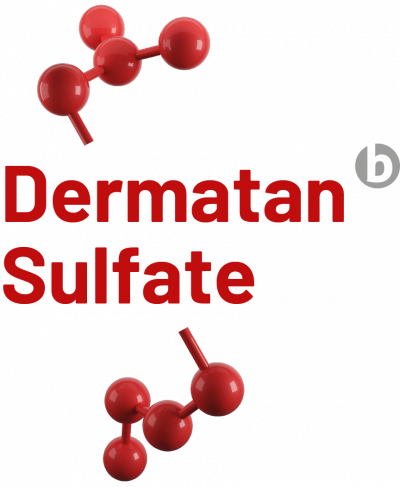
Dermatan sulfate
Dermatan sulfate, also known as chondroitin sulfate B, is found in a wide range of tissues and in virtually all animals. It is obtained by biochemical extraction and purification.
What is it? What is it for?
Dermatan sulfate is a linear polysaccharide formed by disaccharides containing GalNAc and IdoA with β linkages (1.4 or 1.3 respectively).
Dermatan sulfate is a natural glycosaminoglycan found mainly in the skin, but also in blood vessels, heart valves, tendons, lungs, and intestinal mucosa. In addition to its key role as a constituent of tissues and organs, dermatan sulfate is thought to be involved in wound repair, regulation of blood coagulation and the response to infection, although its role in these latter processes has not been fully characterized.
It has been shown that Dermatan sulfate also plays a significant role in cell differentiation, morphogenesis, and migration, which is why this substance is widely used for cosmetic purposes. However, it is thought that its potential use in clinical applications could be very significant.
Interesting biological activities have been reported, including antiparasitic, antiviral, anticancer, and regenerative activities, on which it is hoped therapies and medicinal products can be developed based on the molecule. It appears that the biological activity of some dermatan sulfate chains is related to interactions with growth factors that in some cases results in the inhibition or enhancement of the effects of these growth factors. This suggests that minimum amounts of dermatan sulfate may be used as highly active biomolecules.
With this objective, new bioactive sources of dermatan sulfate are being investigated that may represent potential drugs for future research and development, as well as providing better understanding of the structure-function relationship.
Potential therapeutic applications
-
Anticoagulant and antithrombotic activity
A well-studied interaction of dermatan is the binding of dermatan sulfate to heparin cofactor II, which acts by inhibiting the procoagulant activity of thrombin. It has been reported that this inhibitory effect increases a thousand-fold in the presence of dermatan sulfate. -
Dermatan sulfate in wound repair
As is well known, dermatan sulfate is an important component of the skin and, bearing in mind its location and activities related to coagulation, cell growth and its ability to interact with several proteins, the role of dermatan sulfate in wound repair is currently a very active area of research. -
Dermatan sulfate in infectious processes
Dermatan sulfate (and related proteoglycans) have been associated with the ability to increase resistance to infectious diseases. -
Dermatan sulfate in the central nervous system
The central nervous system is a rich and complex source of proteoglycans consisting, amongst others, of dermatan sulfate and chains of chondroitin sulfate. Particularly high levels of chondroitin sulfate and dermatan sulfate proteoglycans have been seen during brain development. Their presence is related to regulation of expression of growth patterns, which suggests important functions in all developmental stages. -
Dermatan sulfate as a potential anticancer drug
A clear correlation has been shown between the accumulation of chondroitin sulfate and dermatan sulfate proteoglycans and cancer progression. Dermatan sulfate interacts with many growth factors and cytokines involved in cancer formation and progression. As a consequence, structural changes in dermatan sulfate chains and their properties may influence cancer cell biology, growth, and migration. The specific sequences that bind to several key proteins have yet to be identified, but their research and characterization may lead to molecular targets for cancer diagnosis and treatment.
Specifications
The specific manufacturing process of Bioiberica is able to produce dermatan sulfate with a high degree of purity. Our standard quality has a dermatan sulfate content that far exceeds 90%.
However, at the request of the client, our laboratory can offer a higher degree of purity for research purposes.
Because of the quality of our product, the EDQM has selected Bioiberica as the reference supplier of dermatan sulfate established as reference standard.
Dermatan Sulfate SpecificationStorage and Packaging
Storage and handling conditions
The product does not require special storage conditions, however we recommend that it be kept in a cool, dry place preferably at temperatures below 40ºC.
Handling Instructions
Wear a dust mask, gloves and safety goggles.
Packaging
The API as white powder is triple-packed in polyethylene bags sealed with a polyamide cable tie for drums and cans.
The product is available in the following containers according to the quantity and customer specifications:
- Drums of 60L, 30L, 2L , 15 ml vial and 100ml vial.
- The weight limit of our drums is 20 kg net.
- All the containers are fitted with security seals to prevent any potential tampering.
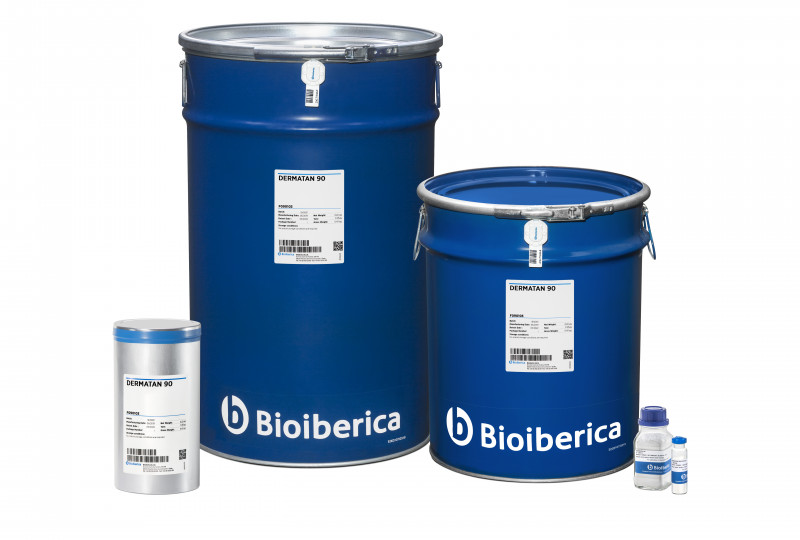
Material safety data sheet
The material safety data sheet is the same for heparin sodium and its derivatives such as heparin ammonium, heparin lithium, dermatan sulfate and heparinoids.
Material safety data sheetCertificaciones
